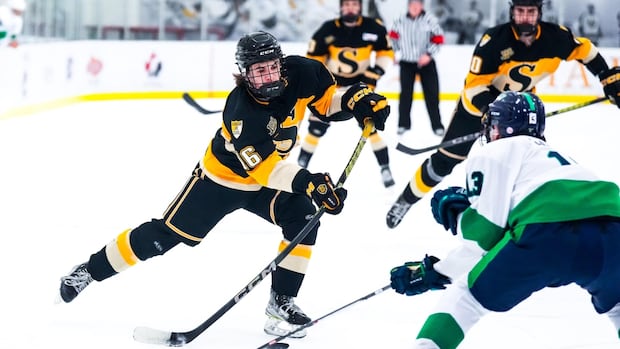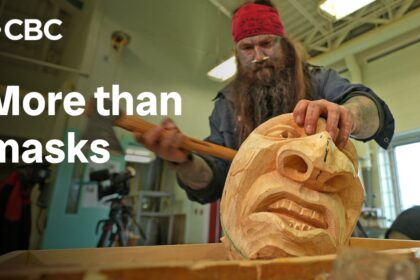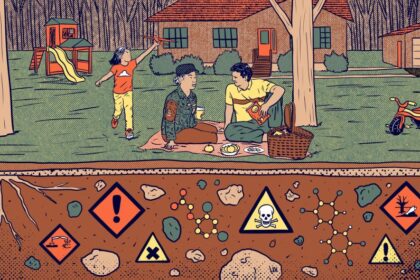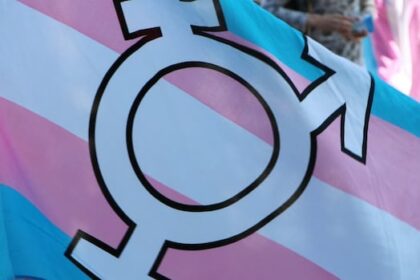British ColumbiaThe Western Hockey League and U Sports, the national governing body for university sports in Canada, are two of many leagues navigating the fallout of a recent NCAA rule change ahead of the 2025-26 season. NCAA council vote last November made CHL players eligible to play NCAA Division 1 men’s hockeyAlex Wauthy · CBC News · Posted: Aug 27, 2025 7:00 AM EDT | Last Updated: August 27Eli McKamey has been skipping age groups in hockey for several years now. (Submitted by Arden Gill/Shawnigan Lake School)The Western Hockey League (WHL) and U Sports, the national governing body for university sports in Canada, are two of many leagues navigating the fallout of a recent NCAA rule change ahead of the 2025-26 season. In November 2024, the NCAA Division 1 Council voted to change Canadian Hockey League (CHL) player eligibility, making CHL players eligible to play NCAA Division 1 men’s hockey. The CHL oversees the Western Hockey League, the Ontario Hockey League and the Quebec Maritimes Junior Hockey League. The change officially came into effect on Aug. 1, 2025. Pierre Arsenault, the CEO of U Sports, says the change has destabilized the traditional movement of players. Before the change, players had to choose between playing in the CHL or the NCAA — a choice typically made in their mid-teens. Mount Allison University’s director of athletics and recreation, Pierre Arsenault, was introduced as the incoming CEO of U Sports on Tuesday. (@USPORTSca/Twitter)Now, CHL players can leave for the American collegiate system once they meet certain criteria set out by the NCAA, such as graduating from high school. “Although it’s one governing body making changes, it’s having impacts across the entire North American hockey system,” Arsenault said. “Impacts, I think, everyone is still making sense of.” Teams in the CHL are directly feeling those impacts — especially the Victoria Royals of the WHL. According to Sportsnet’s CHL to NCAA tracker, six players who were on the Royals roster last season will play men’s hockey in the United States in the fall — including Cole Reschny and Keaton Verhoeff, who left the Royals to join the University of North Dakota (UND) Fighting Hawks.Save-On-Foods Memorial Centre in Victoria, home of the Victoria Royals of the CHL, on Aug. 26, 2025. (Alex Wauthy/CBC)Reschny, the Calgary Flames’ 18th overall selection in the 2025 NHL draft, is in favour of the change, allowing CHL players to play in the NCAA. “It’s tough,” Reschny said. “You’re 14 years old, and you have to make the decision if you want to go to the CHL or play Junior A and try and go the [NCAA] route.” LISTEN | What player eligibility changes mean for Canadian Hockey League teams: On The IslandHow NCAA changes to men’s hockey eligibility is impacting hockey leagues across North AmericaThe CBC’s Alex Wauthy explains what recent changes in the National Collegiate Athletic Association means for Canadian Hockey League teams, such as the Victoria Royals. Reschny says the change will create more opportunities for younger hockey players. Seventeen-year-old Verhoeff — a projected top-five pick in the 2026 NHL Draft — says he couldn’t pass up the opportunity to play in the NCAA against opponents older than he’d find in the WHL. “It was a tough decision to leave a place I called home for a year,” Verhoeff said. “It was tough to leave that close group of guys that was like a family for me.” Uncertainty surrounding team buildingVictoria Royals general manager Jake Heisinger says it’s been a unique situation navigating the change spurred by the NCAA’s changes to eligibility — especially in light of losing Reschny and Verhoeff. Cole Reschny, middle, stands with Lanny McDonald, left, and NHL commissioner Gary Bettman after being drafted by the Calgary Flames during the NHL hockey draft Friday, June 27, 2025, in Los Angeles. (Damian Dovarganes/The Associated Press)Heisinger says he’s taking a day-by-day, month-by-month approach to how players leaving for the NCAA may inform his decision-making. “We will see how things play out and make decisions from there,” Heisinger said. “Everything is really new at this point.” However, Heisinger says the change means that players wanting to play college hockey could join a CHL squad for a few years before heading to the NCAA. The Royals are taking advantage of this by signing 16-year-old Eli McKamey for the 2025-26 season. The forward played in the British Columbia Hockey League (BCHL) last season. In an interview on CBC’s On The Island in August 2024, McKamey told Gregor Craigie that he didn’t want to join the CHL at that time, as he wanted to keep the possibility of going to the NCAA open. After a pit stop in Victoria, McKamey is committed to joining the University of North Dakota Fighting Hawks for the 2026-27 season. Eli McKamey, 15, will be the BCHL’s first exceptional status player. (Submitted by Mindy McKamey)A ripple effect across North American hockey Historically, the BCHL was an option for players like McKamey who wanted to keep the NCAA door open. In 2023, the BCHL told CBC News it sent more players to NCAA Division I schools in the U.S. than every other junior league in Canada combined. However, with the recent changes, BCHL commissioner Steven Cocker says his league spent time reflecting to determine its niche in the “new world.” “We really looked in the mirror to determine what had led to our success,” Cocker said. “It came down to academics — we are the leader in developing the student.” Cocker says that last season, the BCHL made up 25% of the NCAA Men’s Division 1 rosters and 42% of the Ivy League school rosters. “That’s going to be a focus of ours moving forward,” Cocker said. “How can we double down on our commitment to education preparation?” Meanwhile, Canadian universities are noticing a change in where their men’s hockey players are coming from. “As players came to the end of their CHL careers, 45-50 per cent of players that would be recruited to U Sports came from the CHL,” U Sports’s Arsenault said.But in the first season following the NCAA changing CHL players’ eligibility, the percentage of recruits from the CHL for the 2025-26 U Sports season is 16 per cent, down from 44.4 per cent the previous year. However, U Sports is seeing a jump in the percentage of Canadian Junior A and BCHL players coming to it – 62.6 per cent from 50.2 per cent — as well as a jump across other categories the governing body tracked. U Sports says these numbers are compiled from 27 of its 35 men’s hockey teams reporting their incoming recruiting class as of August 21, 2025. “The redistribution of players is happening everywhere,” Arsenault said. “What a Junior A player looks like is being reinvented.” ABOUT THE AUTHORAlex Wauthy is a journalist and radio producer for CBC Victoria. You can reach him at alexander.wauthy@cbc.ca or follow him on X at @AlexWauthyWith files from CBC News and The Associated Press
How NCAA changes to men’s hockey eligibility is reshaping Canada’s hockey pipeline











